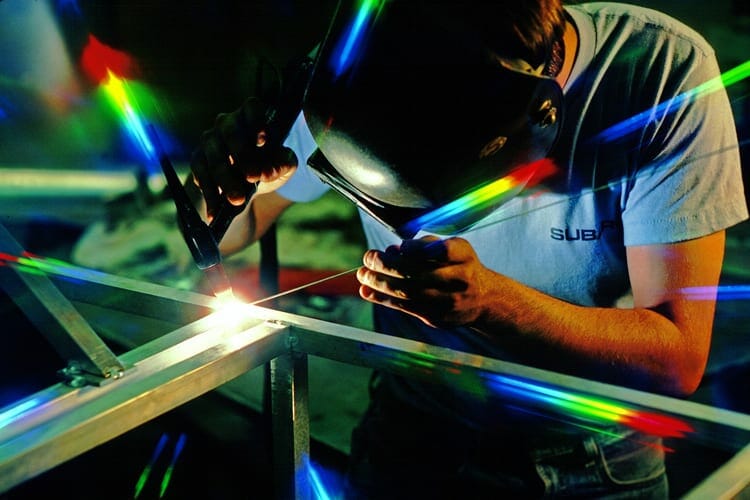Plasma-cutting technology has significantly transformed the metal fabrication landscape, offering unmatched precision and speed for slicing through a range of metals. As businesses seek to leverage this advanced method, it becomes crucial to focus on maximizing efficiency to fully capitalize on its advantages.
Achieving high efficiency accelerates productivity and enhances cost-effectiveness, making operations more profitable. If you want to know how to increase efficiency with this process, read until the end. This article aims to provide you with essential tips and best practices to optimize your plasma-cutting processes.
Read on!
Understanding Plasma Cutting
How It Works
It uses a high-temperature plasma arc to cut through electrically conductive materials. The basic principle involves creating an electrical channel of ionized gas, which conducts electricity and reaches temperatures hot enough to melt metal. This process allows for quick and accurate cuts with minimal heat-affected zones. A cutter is a key piece of equipment that transforms electrical energy into a plasma stream that slices through metals.
Benefits
It offers several advantages. It provides high precision and speed, making it ideal for intricate cuts and high-volume work. Its versatility allows it to cut through a variety of metals, including steel, aluminum, and stainless steel. Additionally, it produces clean edges with minimal slag, reducing the need for post-cutting cleanup.
Setting Up for Efficiency
Choosing the Right Equipment
Selecting the correct plasma cutter is crucial. Consider factors such as the thickness of the material you will be cutting and the type of metal. Ensure the plasma cutter you choose has the necessary power and capabilities to handle your specific requirements. Investing in high-quality equipment tailored to your needs will enhance overall efficiency.
Proper Installation and Calibration
The equipment must be correctly installed and calibrated for optimal performance. Follow the manufacturer’s instructions to set up the machine, ensuring all connections are secure and the power supply is stable. Calibration involves adjusting the settings to match the material and thickness you’re working with, ensuring that it operates at peak efficiency.
Optimizing Cutting Parameters
Adjusting Cutting Speeds
Different materials and thicknesses require different cutting speeds. For instance, thicker metals may require slower cutting speeds to ensure clean cuts and reduce dross. Refer to the manufacturer’s guidelines for recommended speeds and adjust accordingly based on the material and job requirements.
Selecting the Right Gas
The choice of gas impacts the cutting quality and efficiency. Common gases used include air, nitrogen, and oxygen. Each gas affects the plasma arc differently. For example, nitrogen can provide cleaner cuts on stainless steel, while air is often used for general purposes. Select the gas that best suits your cutting needs to optimize performance.
Maintaining the Correct Torch Height
Maintaining the proper torch height is essential for consistent cuts and reducing wear on the equipment. A torch that is too close or too far from the material can result in poor cut quality and increased consumable wear. Use the recommended height settings and adjust as needed to maintain optimal cutting conditions.
Maintenance and Care
Regular Maintenance Routines
To keep the equipment in top condition, adhere to a regular maintenance schedule. This includes cleaning the machine, checking connections, and inspecting the torch for wear. Regular maintenance helps prevent issues that could impact cutting efficiency and prolong the lifespan of your equipment.
Replacing Consumables
Consumables such as electrodes and nozzles are crucial for this process. Timely replacement is necessary to avoid downtime and ensure consistent performance. Monitor the condition of these parts and replace them according to the manufacturer’s recommendations to maintain cutting efficiency.
Best Practices for Efficient Cutting
Utilizing Cutting Techniques
Different cutting techniques can affect efficiency. Continuous cutting is often more efficient than piercing, especially for thin materials. Additionally, using nesting techniques to maximize material usage can help reduce waste and improve overall efficiency.
Minimizing Waste
Optimizing material usage is key to minimizing waste. Plan your cuts to make the best use of available material, and use software or templates to help with layout planning. Efficient material use reduces waste and saves money on raw materials.
Enhancing Operator Skills
Skilled operators can significantly improve cutting precision and speed. Invest in training for your team to enhance their skills and understanding of the machine. Better-trained operators are more adept at adjusting settings and handling the equipment efficiently.
Troubleshooting Common Issues
Identifying Common Problems
Common issues with plasma cutting include inconsistent cuts and excessive dross. Inconsistent cuts can be caused by incorrect settings or poor torch height, while excessive dross may result from improper gas selection or cutting speed.
Effective Troubleshooting
Address common problems by following a systematic approach. Check and adjust settings such as speed, gas, and torch height. Regularly inspect and replace consumables if necessary. Troubleshooting effectively can resolve issues quickly and maintain cutting efficiency.
Closing Lines
Maximizing efficiency in this process involves selecting the right equipment, optimizing settings, and adhering to best practices. By focusing on proper setup, maintenance, and skilled operation, you can enhance productivity and achieve high-quality results. Embrace these tips and practices to make the most of your plasma cutting operations and enjoy the benefits of improved efficiency and cost-effectiveness.




